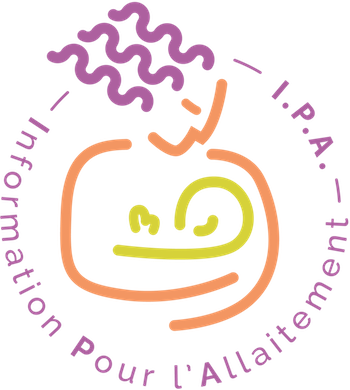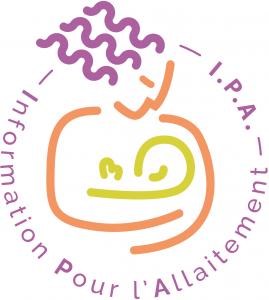Catégories
 > Santé > Professionnels de santé > Consultant.e en lactation > IBCLC > Santé > Professionnels de santé > Consultant.e en lactation > IBCLC
IBCLCVoir aussi
|
Documents disponibles dans cette catégorie (56)
Article : texte imprimé
Keyaria D. Gray, Auteur ; Emily A. Hannon, Auteur ; Elizabeth Erickson, Auteur |Background Human milk feeding reduces the incidence and costs of several maternal and childhood illnesses. Initiation and success of human milk feeding are influenced by race, socioeconomic status, and family support. The influence of early in-[...]Nouveauté
Article : texte imprimé
Elizabeth J. O'Sullivan, Auteur ; Sheela R. Geraghty., Auteur ; Kathleen M. Rasmussen, Auteur |Background: Little is known about women’s participation or likely participation in informal human milk (HM) sharing. The US Food and Drug Administration recommends against feeding infants shared HM acquired directly from individuals or through [...]Article : texte imprimé
Olof H. Jonsdottir, Auteur ; Mary S. Fewtrell, Auteur ; Geir Gunnlaugsson, Auteur |Introduction: Breastfeeding has several advantages for both mother and child. Lactation consultants may promote prolonged breastfeeding, but little is known about their impact on the initiation of complementary feeding. Subjects and Methods: [...]Article : texte imprimé
Background: According to the Baby Friendly Hospital Initiative, when supplementary feeding occurs, mothers should be counseled on the use and risks of feeding bottles and teats. To help support this initiative it is important to understand the [...]Article : texte imprimé
Erica H. Anstey, Auteur ; Martha Coulter, Auteur ; Cecilia M. Jevitt, Auteur |Background: Addressing suboptimal breastfeeding initiation and duration rates is a priority in the United States. To address challenges to improving these rates, the voices of the providers who work with breastfeeding mothers should be heard. [...]Article : texte imprimé
The need to establish a certification for lactation specialized knowledge was recognized in the 1980s by La Leche League’s (LLL) leadership (Marinelli, 2018). A grant from LLL established the International Board of Lactation Consultant Examiners[...]Article : texte imprimé
M Walker, Auteur |The credentials held by healthcare providers—their licenses, certificates, and diplomas—inform the public about the providers’ qualifications to advise and treat. In the United States, state governments establish licensing requirements and admin[...]Article : texte imprimé
Kara R. Skelton, Auteur ; Sara E. Benjamin-Neelon, Auteur ; Kelly C. Young-Wolff, Auteur |Recent increases in maternal cannabis use, in combination with rapidly changing cannabis policies in the United States, pose a unique threat to maternal and child health. To date, 33 states and the District of Columbia (D.C.) have legalized medi[...]Article : texte imprimé
Rachel A. Herold, Auteur ; Karen Bonuck, Auteur |Background: International Board Certified Lactation Consultants (IBCLCs) are associated with increased rates and duration of breastfeeding. Recent US legislation offers opportunities for private and public insurers to include IBCLC services as [...]Article : texte imprimé
In this editorial, I suggest to you that the lack of understanding about our history is one of the reasons why advocacy efforts in our field have been so slow to produce effective change. Perhaps I see this because I have been working in the lac[...]Article : texte imprimé
Melissa Ann Theurich, Auteur ; Megan Elizabeth McCool, Auteur |In 2011, the Surgeon General’s Call to Action to Support Breastfeeding called on all health professional organizations, medical schools, and credentialing boards to establish and incorporate minimum lactation education and training requirements [...]Article : texte imprimé
Christine Bixby, Auteur ; Cindy Baker-Fox, Auteur ; Crystal Deming, Auteur |Background: Mothers of very-low-birth-weight (VLBW) infants often struggle to establish and maintain a milk supply. Children's Hospital of Orange County (CHOC Children's) data from 2005 to 2011 showed that while the total percentage of all neona[...]Article : texte imprimé
Kathleen A. Marinelli, Auteur ; Sara L. Gill, Auteur |With this February 2016 issue of JHL, some of those changes are quite evident. Our cover looks different. We see the new ILCA logo. With all of our changes, we recognized that it was time for a new look that better reflects our global nature and[...]Article : texte imprimé
Brooke Bauer, Auteur ; Clare Hedlund, Auteur |Breastfeeding is a human right for both mothers and infants because, by having breastfed or by being breastfed, nutritional status and health outcomes are more successful than when human milk substitutes are used (Victora et al., 2016). This sta[...]texte imprimé
"Are you an aspiring private practice lactation consultant or have you recently started a lactation consulting business? If so, this is the book for you! Author Kathy Parkes, MSN-ED, BSPsy, RN, IBCLC, RLC, FILCA, has successfully started and run[...]Article : texte imprimé
Lindsey Murphy, Auteur ; Diane D. Warner, Auteur ; Jessica Parks, Auteur |Providing breast milk is challenging for non-nursing mothers of premature infants. Early breast milk expression results in successful and longer lactation in mothers of very low birth weight (VLBW) infants. This quality improvement initiative so[...]Article : texte imprimé
texte imprimé
"Supporting Sucking Skills in Breastfeeding Infants, Second Edition is the essential resource for healthcare professionals working with new mothers and infants. Using a skills approach, it focuses on normal sucking function in addition to anatom[...]Article : texte imprimé
Rachel Witt, Auteur ; Thanvi Vatti, Auteur ; Lauren Lasko, Auteur |Background: A team-based, integrated lactation consultant (LC) and primary care provider (PCP) program improves breastfeeding rates in some outpatient settings, but only a limited number of studies have assessed efficacy in socioeconomically and[...]Nouveauté
Article : texte imprimé
Sarah Dhillon, Auteur ; Paul Singh Dhillon, Auteur |Key messages Social and physical distancing measures due to COVID-19 have increased telelactation utilization. The transition to telelactation can be difficult, as it has not been common practice while demonstration and observation is optima[...]Article : texte imprimé
Sanjay Patel, Auteur ; Shveta Patel, Auteur |Breastfeeding for all infants starting at birth and continuing until at least 6 months of age has been recommended by the World Health Organization and the American Academy of Pediatrics. The health benefits to infants and mothers have been demo[...]Article : texte imprimé
Barbara A. Dennison, Auteur ; Trang Q. Nguyen, Auteur ; Deborah J. Gregg, Auteur |Background: Breastfeeding provides maternal and infant health benefits. Maternity care practices encompassed in the 10 Steps to Successful Breastfeeding are positively associated with improved breastfeeding outcomes. This study assessed changes [...]Article : texte imprimé
Andini Yulina Pramono, Auteur ; Anna Mariska, Auteur |As of 2014, the rate of exclusive breastfeeding in Indonesia has not reached the national target of 80% (Directorate General of Mother-Child and Nutrition Development, 2012). Based on the Strategic Plan of Ministry of Health 2015-2019 (Indonesia[...]




























